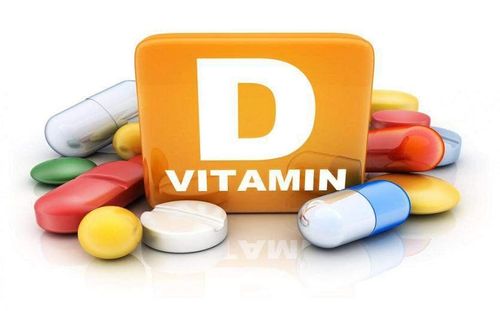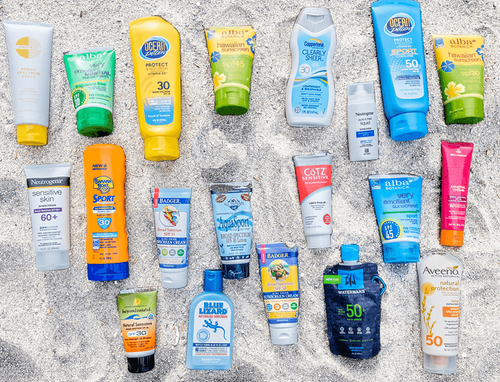This is an automatically translated article.
The article is professionally consulted by Resident Doctor, Doctor Nguyen Hung Tien - Resident Doctor of Pediatrics - Neonatology - Department of Pediatrics - Neonatology - Vinmec Hai Phong International General Hospital.We all know sunbathing for children brings many benefits. Proper sunbathing will help children absorb vitamin D, thereby helping to keep their bones and teeth strong. However, many parents do not know how to properly sunbathe their children.
1. Role of Vitamin D
Together with parathyroid hormone and calcitonin, vitamin D maintains normal plasma concentrations of calcium and phosphate by helping to better absorb these substances through the intestines, reducing their excretion by the kidneys. and thereby help build normal bones.Vitamin D deficiency will cause a number of diseases such as rickets in children and osteodystrophy in adults. Vitamin D is used to treat chronic hypocalcemia, hypophosphatemia and hypoparathyroidism.
In recent years, many studies have shown that vitamin D is not only a vitamin but actually a hormone that plays an important role in maintaining health. Vitamin D, in addition to the role of regulating calcium and parathyroid hormone, also affects the neuromuscular system, insulin, and affects a number of chronic diseases such as osteoporosis, type 2 diabetes, cancer, and cardiovascular disease. , infectious diseases, autoimmune diseases. Vitamin D deficiency is also associated with obstetric complications such as premature birth, low birth weight, pre-eclampsia and even infertility.
Trắc nghiệm: Thế nào là trẻ sơ sinh đủ tháng?
Đặc điểm bên ngoài của trẻ sơ sinh đủ tháng được thể hiện qua các tiêu chuẩn như: Cân nặng, chiều dài và hình thể. Theo dõi bài trắc nghiệm dưới đây sẽ giúp các bậc cha mẹ hiểu thế nào là trẻ sơ sinh đủ tháng, qua đó có thể đánh giá tổng trạng sức khỏe và sự phát triển của bé yêu nhà mình.The following content is prepared under supervision of Thạc sĩ, Bác sĩ y khoa, Ma Văn Thấm , Nhi , Phòng khám Đa khoa Quốc tế Vinmec Dương Đông(Phú Quốc)
2. Ideal time frame for sunbathing
Sunbathing is considered the easiest way to supplement vitamin D for children to prevent rickets. Most postpartum mothers are instructed by doctors and medical staff to let their babies sunbathe as soon as possible and should only be exposed to the sun before 8 am.Recently, scientists around the world have announced that sunbathing before 9 am or after 4 pm has no effect on helping the body produce vitamin D. This recommendation is built based on research results on the difference. differences in biological effects between the different types of rays present in sunlight.
Sunlight includes visible rays (seven-color rainbow) and invisible rays also called ultraviolet rays (UV rays).
Based on different wavelengths and biological properties, UV rays are divided into 3 types UVA, UVB and UVC. Among them, UVC has the shortest wavelength (200-290 nm) and is the most harmful to human health. Fortunately, 100% of UVC rays are absorbed by the ozone layer before reaching the ground.
UVA rays have the longest wavelength (320-400 nm) and account for 95% of the total UV radiation in sunlight reaching the earth. UVA has the ability to penetrate the ozone layer, clouds, water, layers of glass, thin clothing and even sunscreens that do not have a broad spectrum.
This means that there are UVA rays for as long as there is sunlight, from early morning to late afternoon, even when it's cloudy or rainy. UVA rays penetrate the skin layer to the dermis, damaging basal cells, which is the leading cause of skin aging, tanning and increased risk of skin cancer. UVA rays have absolutely no function to synthesize vitamin D.
UVB rays are the only rays that stimulate vitamin D3 precursors. UVB has a shorter wavelength than UVA (290-320 nm) and about 95% of UVB rays are absorbed by the ozone layer. Increasing the path length as UVB penetrates the ozone layer will result in a decrease in the number of UVB photons reaching the Earth's surface.
This explains why UVB rays are strongest in the middle of the day when the rays are perpendicular to the ground. During this time, UVB rays account for 3-5% of the total radiation reaching the Earth. Before 9 am and after 4 pm, UVB rays are absorbed almost completely by the ozone layer, only mainly UVA rays, so vitamin D will not be synthesized if sun exposure.
Despite the benefits of helping to synthesize vitamin D is an important hormone for the body, but with frequent exposure to intense intensity, UVB rays can also cause burning, tanning and an increased risk of skin cancer. Unlike UVA, UVB rays do not penetrate water, clouds, clothing, glasses, and sunscreen.

3. Instruct parents to properly sunbathe their children
A baby's skin is only 1/5 of an adult's skin. Before the age of 3, the stratum corneum in the epidermis of the skin is very thin and has little melanin, the baby's skin is completely resistant to UV radiation. To prevent the harmful effects of sunlight on children's delicate skin, the American Academy of Pediatrics recently recommends that children under 6 months of age avoid direct sunlight at any time. during the day. According to the recommendations of the World Health Organization (WHO), children under 1 year old should not be exposed to the sun because their skin is still weak under 1 year old. If children are exposed to direct sunlight, they will be at risk of skin diseases later on, even skin cancer.Still let children play and interact with the natural outdoor environment to develop motor skills. Older children must be equipped with sun protection tools such as glasses, sunscreen, ... especially when the sun is hot.
For older children, the time when the sun has a lot of UVB rays to help the body produce the most vitamin D is midday. However, exposure to the sun at this time can easily cause skin damage. Sunbathe only when the length of the shade of your body is shorter than your height. That is about after 9 - 10 o'clock or 3 -4 pm. In Europe, America sunbathe at noon. In the first few days of sunbathing, only sunbathe for 3-5 minutes (especially in the middle of summer) to let your body get used to the sun. Melanocytes will produce pigments to avoid exposing the skin to too much sunlight, to protect the body. When the body is accustomed to the sun, in the summer we sunbathe for 5-10 minutes, in the winter 15-20 minutes. The sunbathing time closer to noon is shorter. Wear sunglasses with UV protection and a wide-brimmed hat when sunbathing. Most people can make enough vitamin D from daily exposure to the sun for the period above 10-15 minutes with their forearms, hands or feet uncovered and without sunscreen. This way of sun exposure can provide enough vitamin D as recommended by nutrition institutes around the world, 600-1000 IU/day for children from 1-18 years old and 800-1000 IU/day for adults.
Observe the skin color, when we see the skin blushing, we have had enough sunbathing. Avoid direct sunlight on the face and around the eyes because the skin is the thinnest in the body. You can apply moisturizer to the sunlit skin to create favorable conditions for the body to make vitamin D.
In addition to sunbathing, some foods such as salmon, cod, mackerel, milk, egg yolk .. . also provides vitamin D but only about 5% of the daily need. In cases where sun exposure is not possible, food is not enough to provide the necessary vitamin D requirements, vitamin D supplements can be used by drops or sprays. Supplemental doses did not differ significantly by age group: 400 to 600 units of vitamin D per day. Consult your doctor for vitamin D supplements if needed in cases where the infant is exclusively breastfed, or the infant is drinking less than 400ml of formula/day. It should be noted that children who drink formula with an amount of 700ml or more/day do not need vitamin D supplements.
In addition to vitamin D, parents also need to supplement their children with other important vitamins and minerals such as zinc, lysine , chromium, vitamins of group B, ... help children eat well, have a good immune system, strengthen resistance to reduce minor illnesses.
Please regularly visit Vinmec.com website and update useful information to take care of your baby and family.














